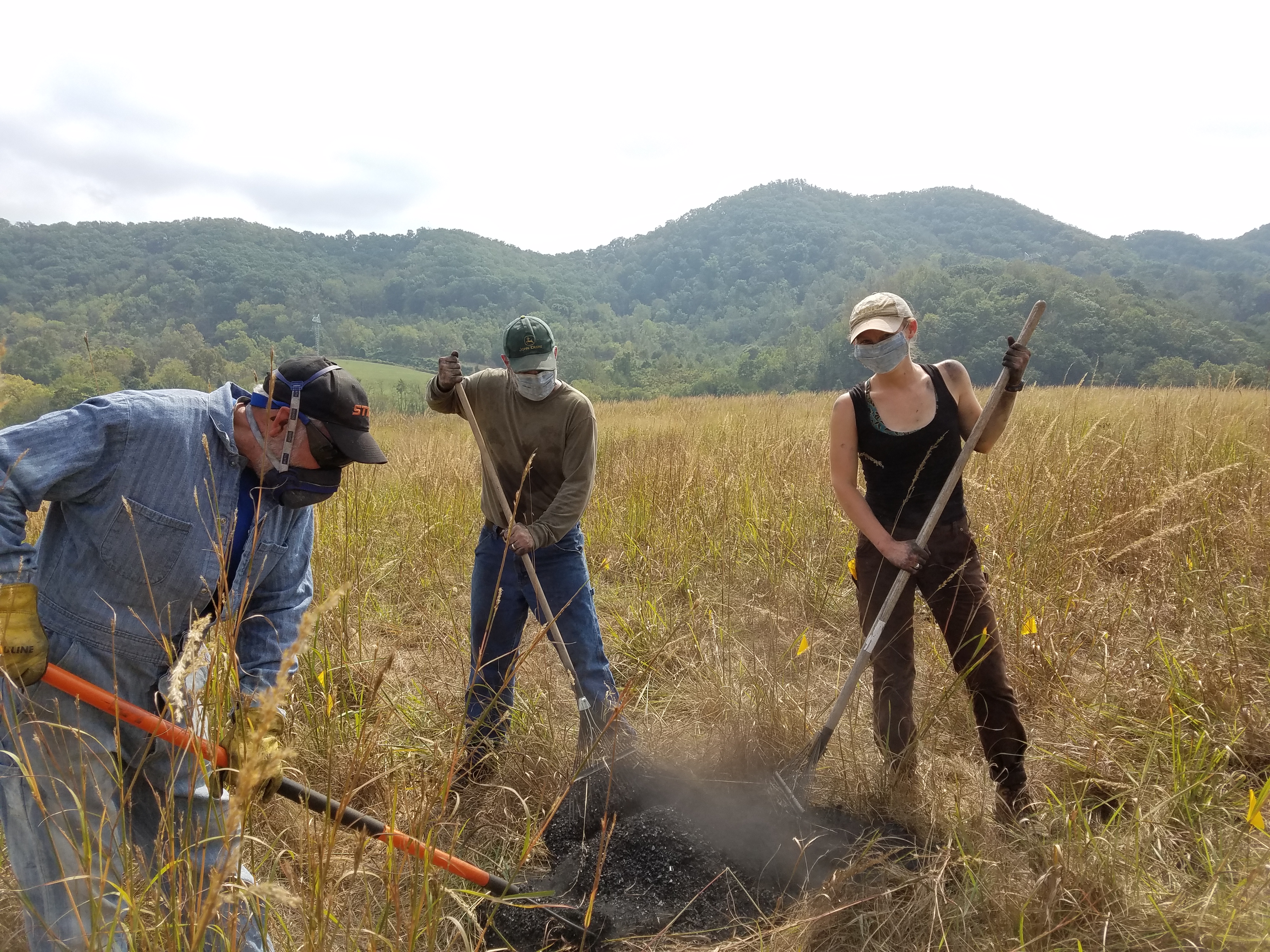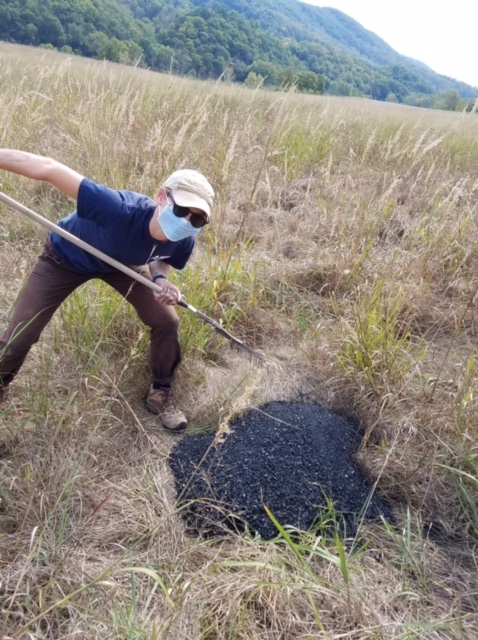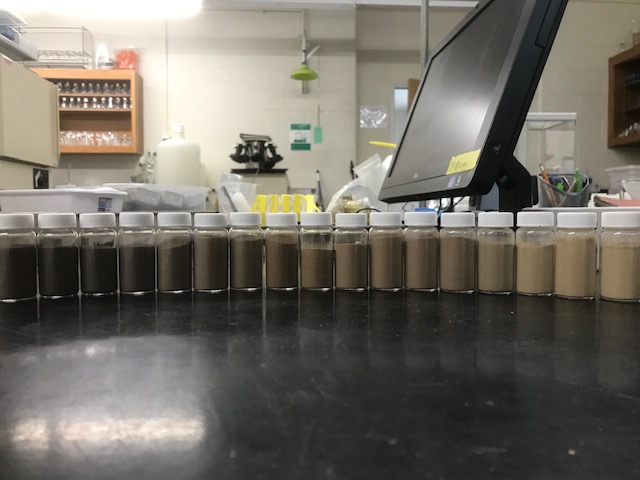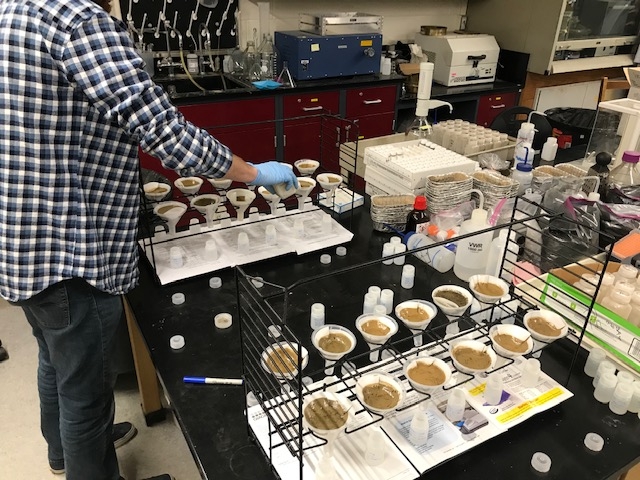Sophie Drew: Soil has a lot to say if you ask the right questions
This narrative was written in 2021 by Sophie Drew for GRAD 5144, Communicating Science, in response to an assignment to write a story about her research.
In soil science lingo, a “field experiment” is exactly what it sounds like. Rather than attempting to approximate a slice of the natural world in the lab, scientists pack up their bags and take the research outside.

There are pros and cons to this type of hands-on work, of course. Weather can be unpredictable, the little yellow flags marking your plots can get lost in the thick chest-high grass, and if you forget a Sharpie back in lab, you’re out of luck. Sometimes, you show up to your site to find a herd of cows standing on your plots, graciously adding their own organic soil amendments that were not part of the original experimental design.

Despite the messiness of work in the field, it is easily my favorite part of research.
My site is on a farm tucked up against one of southwest Virginia’s classic ridges. The buildings and silos are visible from the Appalachian trail above. In the summer the mountains are rolling green and the valley itself is golden with grasses grown for hay. When we take soil samples we pound a corer into the ground and pull up rich brown cylinders with layers of texture and color like a good chocolate cake. Unlike the sterility of a biology lab, with its metal, plastic, and glass, the field is full of smells and sounds. Much of my work does occur in a laboratory, but it feels right to see the soil in its natural habitat before we dry it, grind it, and extract its nutrients. There is a lot you can learn from being at a study site that doesn’t come through in raw data. High soil carbon readings can be useful indicators of soil health, but strong glossy grass communicates a happy ecosystem on a more intuitive level.

Back in lab with my soil samples, the next step is to disassemble that collection of textures, colors, and smells into its component parts. I dry spoonfuls of soil and grind them into a fine powder. Small glass vials fill with a rainbow of browns, red, and yellows, all bound for an instrument that will tell me their carbon and nitrogen contents. I shake other subsamples with mixtures of salts and acids and pour the slurries through paper filters, extracting the invisible nutrients that feed plants and microbes. Other subsamples of soil get sieved through finer and finer mesh, splitting into particle size classes: gritty sand, silky silt, and sticky clay. The proportions and properties of each of these fractions tell us about the conditions for plant growth and carbon storage capacity of each soil we test.

The final step of any scientific project is to rebuild something new out of the minute pieces you’ve picked apart. In my case, the data come together to form a sketch of soil quality, past land use, recent weather, and management strategies. I can see the acidity of the soil, the nutrient concentrations, and the difference in soil texture between two nearby plots. Sometimes this information confirms what I suspected based on the appearance of the ground and plants in a plot. Other times the numbers tell a surprising story that sends me down a whole new path.
We rarely think about the soil around us, but it has a lot to tell if you know how to ask.



